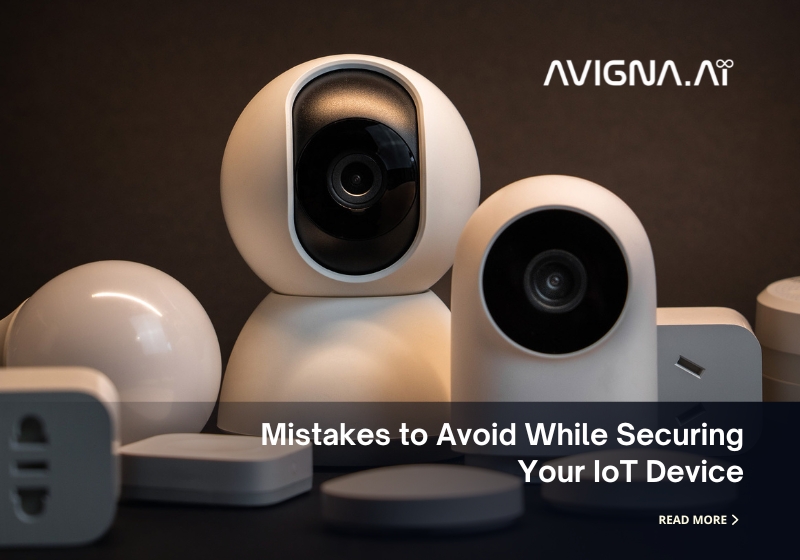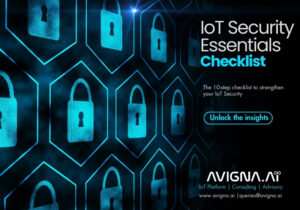Imagine this scenario: It’s the quarterly security review meeting with the executive team ahead. As the head of IoT security, you are presenting on the IoT security mistakes to avoid. What should you focus on?
While traditional IoT security had strengthened, this emerging network of remotely connected industrial equipment and sensors posed fresh, complex challenges. Learning from common mistakes made in similar environments guides us through the steps needed to secure this evolving attack surface and protect core operations in the future. Join me as I explain in this blog the top mistakes to avoid while securing your IoT device.
1. Ignoring Device Hardening
One of the most basic yet grave mistakes is failing to apply basic hardening techniques to IoT devices. Many such devices come with factory default settings and credentials, posing serious IoT security mistakes if kept the same.
- Change all default passwords and set unique solid passwords on each device. Consider using a password manager.
- Enable authentication methods like usernames, passwords and 2-factor authentication wherever possible.
- Make sure devices are updated with the latest firmware and patch releases. Outdated devices are vulnerable to known issues.
- Restrict administrative access and privileges to trusted sources only.
- Use network segmentation and firewalls to control traffic to and from devices. Isolate devices from critical systems.
2. Lack of Access Control
Securing Your IoT Device can be easily compromised without proper access control policies.
- Define authorized access and activity policies for devices, networks, and applications as per job roles.
- Monitor and log all access regularly. Set up alerts for abnormal behaviour.
- Use multi-factor authentication for high-risk access and regular password changes for admin accounts.
- Set a cap on the amount of unsuccessful login attempts to prevent brute-force attacks.
- Restrict physical access to devices, especially those handling sensitive data or in production environments.
3. Weak Vendor Partnerships
Vendors play a crucial role in IoT device security. Ensure yours takes it seriously.
- Evaluate vendor security practices and incident response capabilities upfront.
- Ask for compliance with international security standards and regular security audits.
- Have provisions to control and patch devices if the vendor fails to support them.
- Make vendors responsible via SLA for updating software and firmware for at least 3-5 years.
- Avoid vendors with a history of security breaches or those known to provide only minimal/limited security features.
4. Lack of Monitoring and Detection
If you can’t see your IoT infrastructure, you can’t protect or respond to real-time issues.
- Install adequate logging, monitoring and analytics tools for visibility into devices and traffic.
- Continuously monitor logs for anomalies and red flags. Some monitoring things include authentication failures, unauthorized access attempts, and abnormal device traffic.
- Examine logs to find privileged users, high-risk behaviours, essential assets, and compliance holes.
- Conduct regular ethical hacking exercises and vulnerability assessments to find weak areas and repair security vulnerabilities proactively.
- To safeguard your IoT device, establish baseline behaviours and quickly create alarms for deviations.
5. Lack of Incident Response Planning
Even with the best precautions, breaches may happen. Without IoT device security, the impact can be severe.
- Document response procedures for different security situations like device tampering, data breaches or denial of service.
- Define clear roles and responsibilities of internal teams and external vendors/partners in case of incidents.
- Maintain an updated list of key contacts and their roles for urgent escalations.
- Prepare communication guidelines for notifying affected parties, regulators, and clients promptly.
6. Lack of Encryption
Unencrypted IoT traffic leaves sensitive data prone to snooping and tampering in transit, making it one of the biggest IoT security mistakes.
- Encrypt traffic between IoT devices, gateways and backend systems using TLS/SSL.
- Encrypt data stored on devices and in transit from devices to cloud platforms.
- Use more robust algorithms than basic TLS v1.0/v1.1 for sensitive data transmissions.
- Have key management policies periodically for encryption keys’ distribution, revocation, and rotation.
- Use techniques like hash-based message authentication codes to verify data integrity.
7. Lack of Network Segregation
Without proper network segregation, the risk of lateral movement after an initial breach increases.
- Physically or logically separate IoT networks from business-critical networks to avoid expansion of threats.
- Control IoT network traffic and limit internet access, especially for resource-constrained devices, to enhance IoT device security.
- Restrict east-west communication between IoT devices to only authorized destinations.
- Use VLANs and firewall policies to micro-segment networks based on the criticality and function of devices/applications.
- Isolate experimental devices from production ones using air-gapped test networks.
8. Improper Device Disposal
Thoughtless device disposal can nullify all other security measures by risking exposure of sensitive data residues.
- Ensure devices due for disposal are securely wiped, and all credentials/data are removed or destroyed non-retrievably.
- Physically destroy storage devices or degauss them for permanent data erasure.
- Leverage asset management tools for tracking hardware inventory and scheduling devices for secure retirement.
- Adopt policies prohibiting the resale of old devices to third parties who may try to recover sensitive data.
9. Weak Identity and Access Management
Weak identities make implicit trust assumptions that are easy targets for attackers.
- Implement robust access controls based on user identities and attributes like department and location instead of open access.
- Restrict default/backdoor accounts and credentials where possible. Delete or deactivate unused accounts.
- Support multidimensional identity attributes beyond usernames for a granular authorization model.
- Integrate with corporate user directories/identity stores for SSO where users can be uniquely identified.
- Rotate/expire tokens and credentials automatically when users change roles or terminate employment.
10. Lack of Audit Trails
Proper logging and auditing make it possible to know who accessed what resources and when.
- Maintain audit trails by systematically logging the activity of users, devices, and system/application components.
- Ensure logs capture details like user IDs, actions done, resources and data accessed along with timestamps.
- Centralize logs from all platforms and devices to a secure log management server for analysis and retention.
- Establish mechanisms for continuous monitoring, detection and reporting of anomalies from logs.
- Integrate logs with SIEM for correlation with other events to identify sophisticated attacks spanning multiple vectors.
11. Lack of Vulnerability Management
Devices and code are vulnerable – act early to reduce business risks.
- Adopt a vulnerability disclosure program encouraging researchers to coordinate the disclosure of flaws.
- Automate vulnerability scanning of devices, code, configurations and third-party components regularly.
- Systematically track and rank vulnerabilities to prioritize remediation of critical flaws.
- Remediate high-impact flaws within defined timelines through patching, configuration hardening, etc.
- Consider compensating controls and segmented access if patches aren’t immediately available.
- Run penetration tests by independent assessors periodically to catch weaknesses in people and processes for securing your IoT device.
Secured IoT devices promises a secure future
Securing your IoT device requires a holistic approach with people, processes and technology working together seamlessly. While technology solutions address many vulnerabilities, oversight and procedures streamline their effectiveness. With the attack surface expanding rapidly, businesses must respond quickly and adopt proactive security practices upfront rather than encountering issues later.
Avigna’s IoT Solutions and Expertise drive global innovations. Consult with us for IoT Implementation and Strategy. Build your IoT innovation on our award-winning IoT platform Avigna Cube. Email us at queries@avigna.ai to learn more. Contact us. Follow us on LinkedIn.






